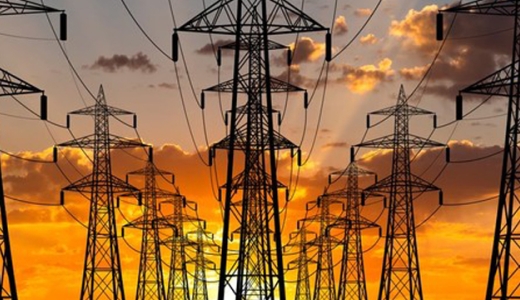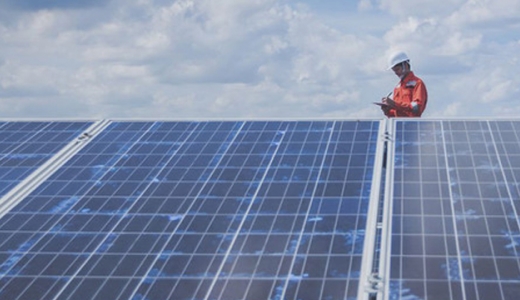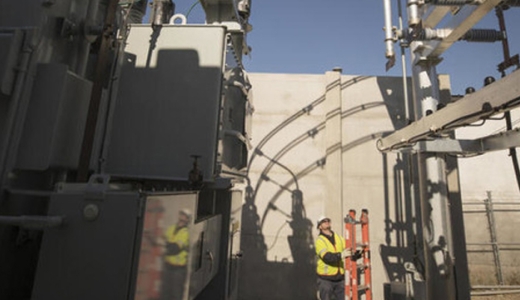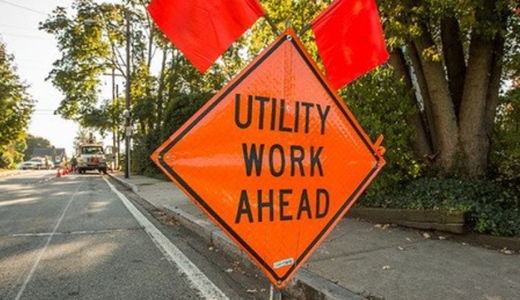To ensure we meet our 2030 GHG emission reduction targets and our states’ climate policy goals, we are advancing our emission accounting techniques and committing to public transparency.
We are also working with our communities to ensure an equitable transition that enables all of us to meet the challenge, and we are progressing plans to reduce direct and indirect emissions across our full breadth of emissions sources.
Meeting the challenge of the critical decade
The United Nation’s Intergovernmental Panel on Climate Change (IPCC) report[1] makes it clear that we need to significantly reduce carbon emissions by 2030 if we are going to avoid the worst impacts of climate change. This makes the next ten years 'the critical decade' for this global challenge, and as a company we are acting with a shared sense of urgency. As of 2020, National Grid US has successfully reduced our Scope 1 and 2 greenhouse gas emissions by 67% from our 1990 baseline. For five consecutive years, we have achieved an ‘A’ grading (the highest) for our response to the CDP, an international non-profit organization helping companies disclose their environmental impact. To ensure we are doing enough to address global climate change, we have also partnered with the Science Based Target initiative (SBTi) to determine what targets we would need to meet to do our part in keeping the Earth’s temperature below the 2 degree Celsius threshold, or approximately 3.6 degrees Fahrenheit, to avoid the most catastrophic impacts of climate change. We are proud to be the only investor-owned utility in the US to have SBTi-verified targets. and believe that this partnership is a model for how energy companies across America can lead on this critical issue.
Decarbonization pathways: 4 big shifts needed in our energy systems by 2030
A transformation of the transport sector by electrifying 20% or more of all vehicles.
Accelerating the zero-carbon electricity transition by ramping up renewable electricity deployment to achieve 80-100% zero-carbon electricity supply.
A transformation of the building sector by doubling the rate of efficiency retrofits.
Decarbonizing the heating sector by converting nearly all the region’s 5 million oil-heated buildings to cleaner solutions, such as heat pumps, and by increasing the amount of low carbon fuels in our networks.
Our emission targets are aligned with those of the states in which we operate, and we will continue to support them in meeting their respective 2030 climate goals. To help reduce transportation emissions, National Grid plans to install roughly 50,000 charging ports by 2025 to support large-scale vehicle electrification. We have also identified nearly $5 billion in electric transmission and distribution infrastructure upgrades needed to enable our states’ 2030 targets for zero-carbon electricity. In the next 5 years we plan to reach over 850,000 megawatt-hours of electricity savings and 5.7 million dekatherms of gas savings through energy efficiency, including installations of electric heat pumps to more than 45,000 customers in the next few years. By 2030, we aim to reach at least 30 million dekatherms of our gas supply from carbon-neutral renewable natural gas from sustainable feedstocks – enough to meet the demands of roughly 240,000 average residential homes. National Grid is proud to support our states in this critical decade as we push ourselves to reduce greenhouse gas emissions in an effective, fair and urgent manner.
Helping set and meet emission targets
Greenhouse gas emission reporting can be broken out by scopes. As defined by the U.S. Environmental Protection Agency (EPA), Scope 1 emissions are direct emissions that occur from sources that we control or own, and Scope 2 emissions are indirect emissions related to our electricity consumption and energy losses in our electric grid (line loss). Scope 1 and 2 emissions are often grouped together when making emission reduction commitments. Scope 3 emissions are the result of activities from assets that we do not own or control, but which we can indirectly influence.[2]

At National Grid, we also understand our impact as a seller of natural gas and electricity to our customers, and we recognize the importance of our role in helping reduce the emissions of these sold products. That is why, in October of 2020, we expanded our ambitions to strive for net zero emissions inclusive of these indirect emissions from our gas and electric sales. It's not common for companies to include Scope 3 emissions in their greenhouse gas reduction efforts, or in their net zero targets; however, as a utility our Scope 3 emissions cannot be ignored and we look forward to helping reduce these emissions.

[1] https://www.ipcc.ch/assessment-report/ar6/
[2] https://www.epa.gov/climateleadership/ghg-inventory-development-process-and-guidance
[3] Global target (inclusive of National Grid US, National Grid UK, and National Grid Ventures)
[4] Global SBTi verified target
Our largest direct Scope 1 emissions are from the fugitive gas system emissions, which includes the methane that escapes as we deliver natural gas to our customers.[1] Our largest Scope 2 emissions are from the electric losses of our electric delivery systems. Most of our indirect, Scope 3 emissions are from the use of our sold gas. We also have material indirect emissions associated with the electricity we sell and relating to our supply chain of purchased goods.
2020 NGUSA Emissions in metric tons
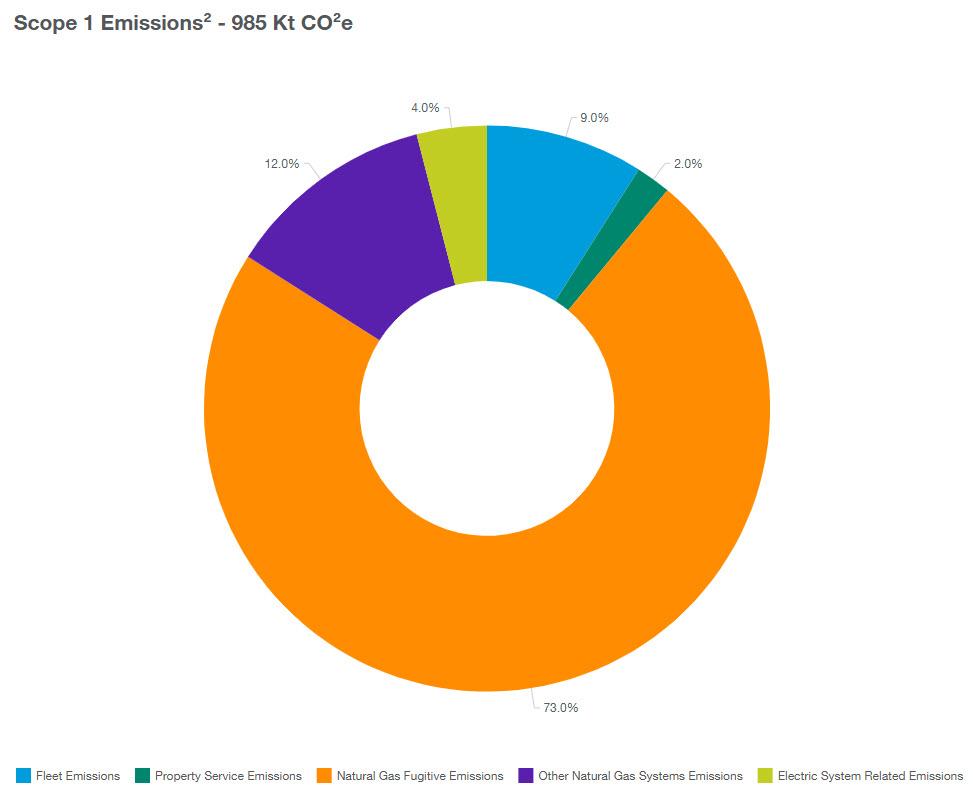
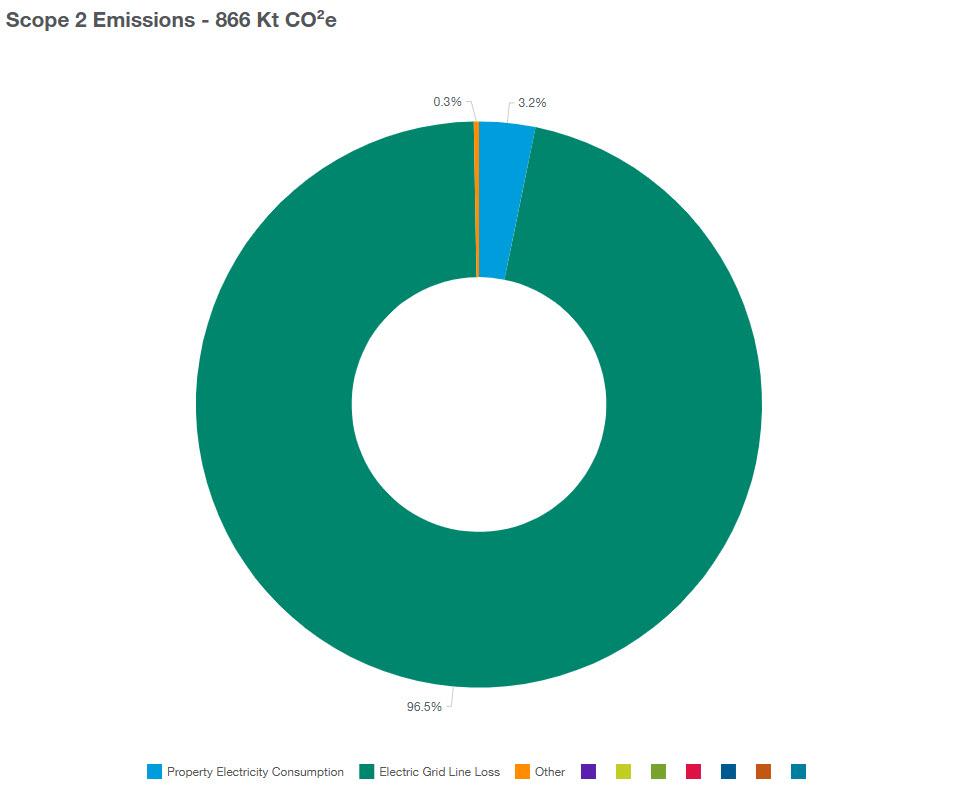
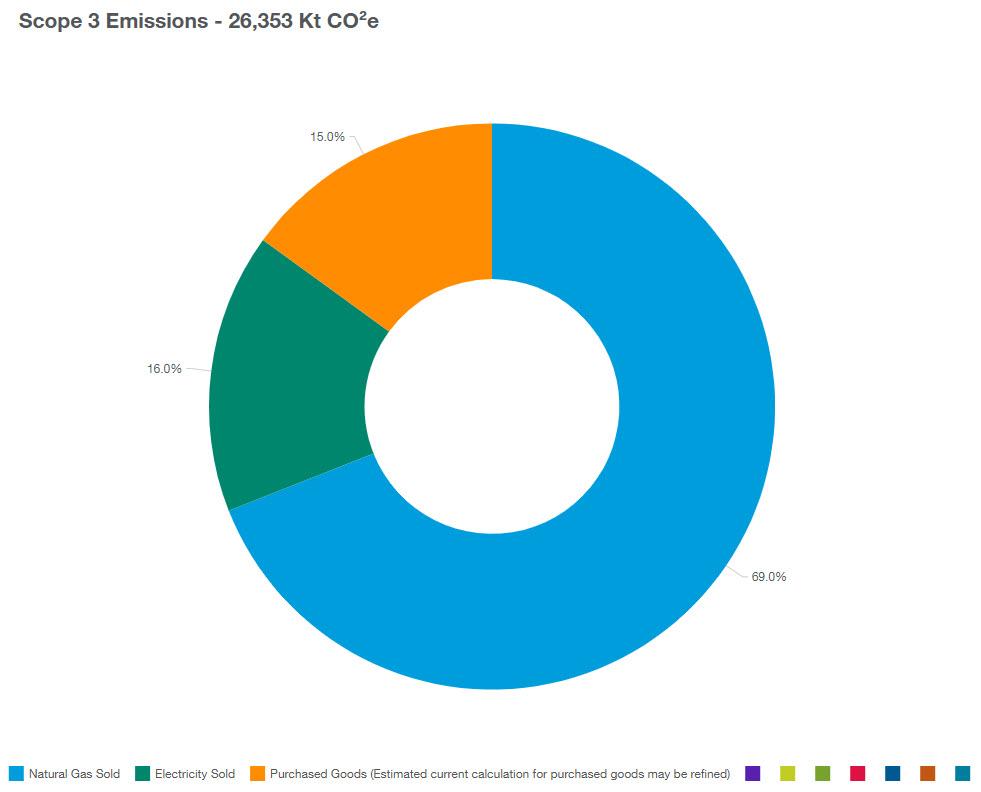
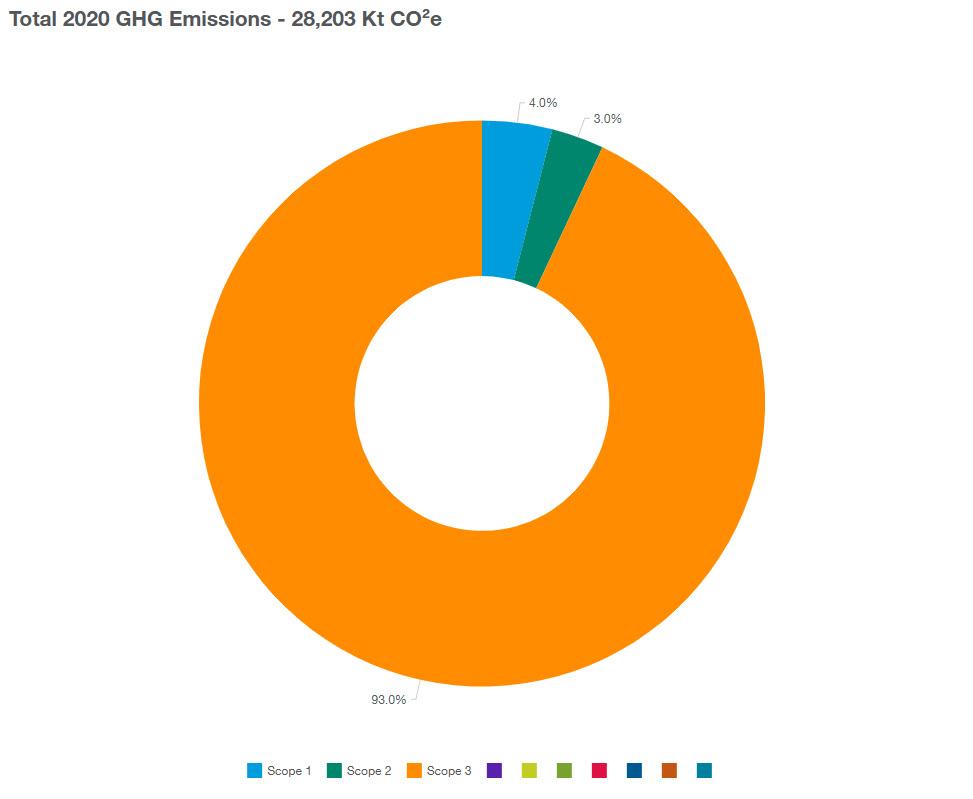
[1] National Grid Ventures’ Long Island fossil generation emissions of approximately 3,000 kt of CO2e in 2020 are not included in the Scope 1 emissions shown above. As of April 2021, these resources are managed separately from the NGUSA regulated businesses.
Related National Grid Group Initiatives in the US
National Grid Ventures (NGV) is the competitive division of National Grid plc, with non-regulated operations in the UK, Europe, and US. It operates outside of National Grid’s core regulated businesses in the UK and US where it develops, operates, and invests in energy projects, technologies, and partnerships to accelerate the development of ourclean energy future.
In the US, NGV’s carbon-free renewable generation produced energy that displaced other US generation that would have otherwise emitted an estimatedover 700,000 tons of CO2e in 2020.
In the US Northeast, NGV has several projects that are either now or will soon reduce greenhouse gas emissions from other Northeast carbon-emitting sources. NGV teamed with NextEra Energy Resources, Inc. (NextEra) to develop and own two operating battery energy storage facilities on Long Island that provide 10 MW of stored energy on eight hours of every summer day, displacing gas and oil-fired peaking generation that would be otherwise typically be dispatched during those hours. NGV and NextEra are also in the construction phase of a 23 MW solar facility on Long Island.
Also, in the Northeast, NGV and RWE Renewables have partnered to develop offshore wind projects off the New York and New Jersey coasts, beginning with plans to bid for a lease in the NY Bight in late 2021 or early 2022. Even the smallest of the proposed NY Bight wind energy areas has the potential to produce more than one million MWh per year, enough to displace an estimate of more than 600,000 tons of CO2 per year.
Our plans and progress
Over the next decade, continued rapid progress of large-scale renewable buildout, together with acceleration of energy efficiency (especially building weatherization) is critical to achieve reductions across our direct and indirect emissions. To further support our region’s decarbonization efforts, while improving future energy reliability, we must utilize low-carbon and cleaner fuels in our gas network to complement our heat electrification initiatives. These vital initiatives will help meet our customers’ heating needs in sectors that are hard to decarbonize such as large industry, heavy transport, and heating. We believe that investing in innovation and increased scaling of clean energy technologies will help reduce costs, increase accessibility, and most importantly, help us meet our net zero goals during this critical transition decade.
The 10 pillars of our strategy
Below find out more about our targets and achievements to-date.

Ensuring fairness and affordability
Not all customers are equally affected by the costs of their monthly energy bills or changes in household circumstances. Helping our most economically vulnerable customers with tailored programs that meet their individual needs and enhanced services that improve their daily lives is an essential part of National Grid’s commitment to energy equity ensuring that all our customers and communities can afford to have the clean energy they and their families need.
Currently, we offer a range of solutions for low- and moderate-income customers, including income-eligible monthly bill credits, payment plans, forgiveness programs, grant programs, and personalized support. Many of our income-eligible customers can see particular benefits from the energy savings programs we offer. Across our service territories, income-eligible customers can obtain many residential efficiency upgrades — from weatherization to replacement appliances — at no cost. We have also recently proposed new energy equity programs to ensure no customer is left behind in the clean energy transition by increasing access to low-carbon energy technologies in targeted communities, from community-shared solar to electric vehicle charging access to zero-emission school bus incentives.
Many of the communities we serve also face inequitable environmental impacts, whether from localized sources of emissions, or the effects of climate change. Fairness, affordability, and equity will continue to be central to our strategy for addressing climate change, ensuring that every customer has access to affordable and reliable energy and that we all share the benefits of a net zero future.
In September 2021, National Grid launched Project C across our New York business. It is a comprehensive endeavor expanding upon our long, proud legacy of community involvement by thinking beyond our conventional energy services to help create a more equitable future for every customer and neighborhood we serve.
We’ll achieve this by connecting our communities to clean and sustainable energy, caring for our neighborhoods and their revitalization, compassionately addressing the challenges our customers face (including social justice and equity), and training the workforce that’ll help build New York’s clean energy infrastructure.
Right now, we are focused on three important initiatives. Our Neighborhood Investment Program will help revitalize communities by fostering energy, education and community development projects.
We are also partnering with local organizations to offer technical support to small businesses – funding the essential economic development needs of partner organizations. Through our Adopt A Park program, we’ll help restore greens spaces to their natural beauty.
By collaborating with our customers, community partners, stakeholders and so many others, we’ll ensure we deliver a clean, fair, resilient and affordable energy future to all and inspire positive change now and for generations to come.
Redefining the mission to meet the challenge
We will enable our customers to reduce their emissions through energy efficiency and demand response programs, continued distributed generation interconnections, and increased access to electric vehicle charging stations and electric fleet conversion support. Our electric and gas supply systems will transform to provide lower carbon electricity and lower carbon gas to customers with continued reliability and safety. We will embrace and empower the growth of renewable energies while also taking critical steps to ensure energy equity and reliability for all.
While the future energy challenges are significant, we believe that through collaboration and cooperation, innovation and new technologies, we can and will achieve a net zero energy future. There is no mistaking the fact that the transition will pose challenges and will demand all of us to constantly envision new strategies on how to best meet our diverse customers' energy needs. We fully embrace this challenge. As part of this commitment, we will remain open to potential solutions that may not exist or may not seem relevant today but offer the hope of building the cleaner and more reliable energy future we all want.
National Grid will remain honest and transparent about our progress, acknowledging when challenges or new opportunities arise. We will also listen to those who have different views and work collaboratively with those who share our concerns for climate change and energy equity.
All 17,640 hard-working people at National Grid US are proud to collaborate with New York and Massachusetts, and we look forward to meeting the target with an essential focus on this critical decade.



